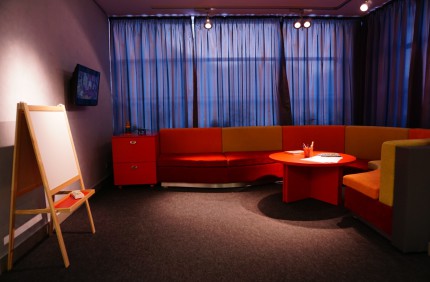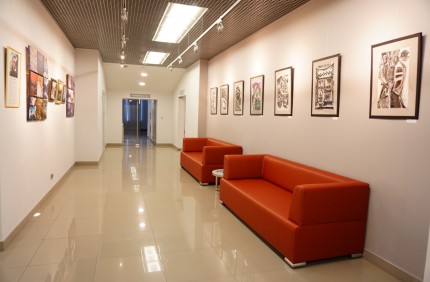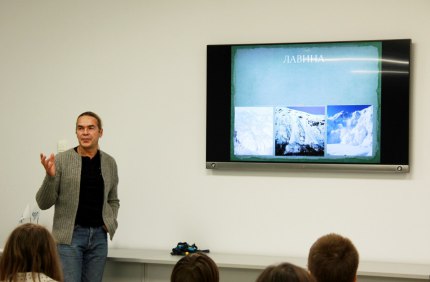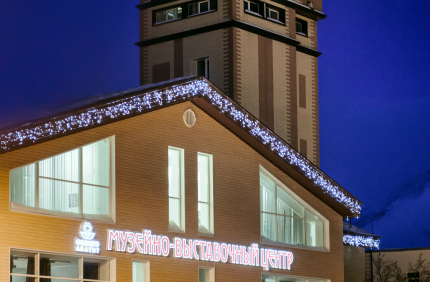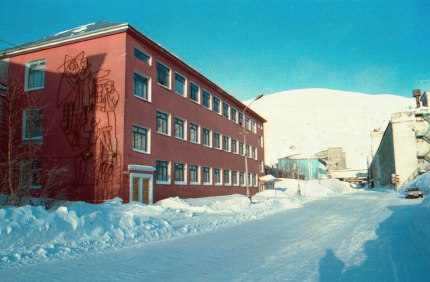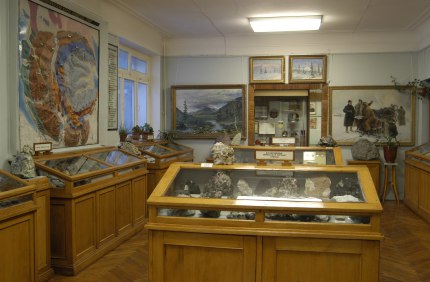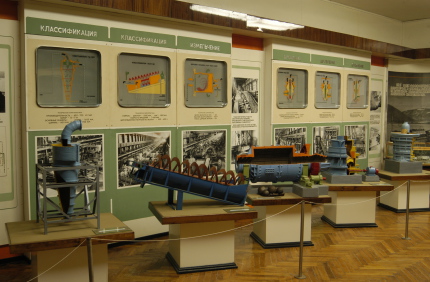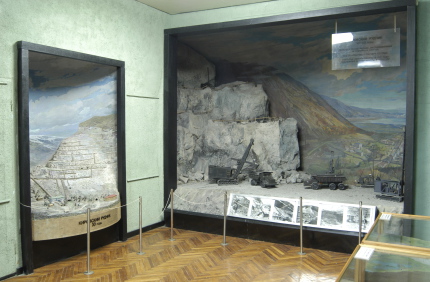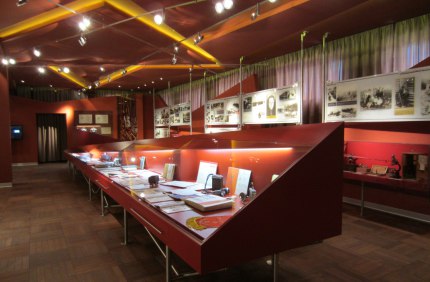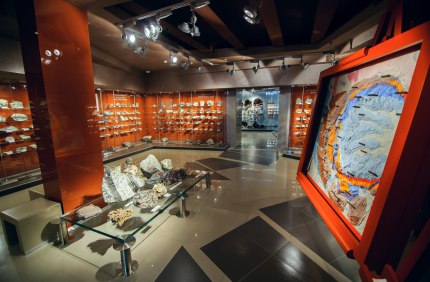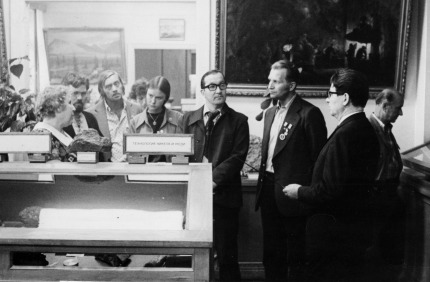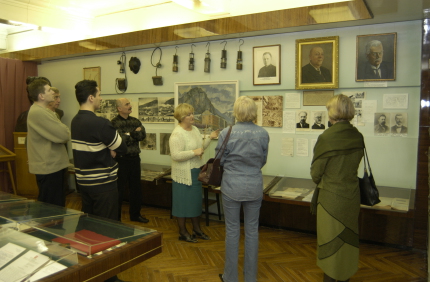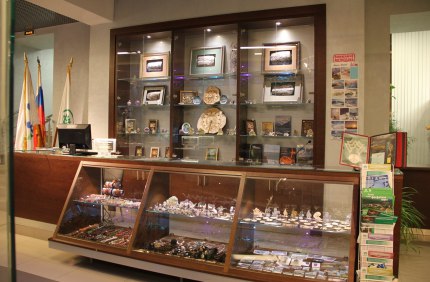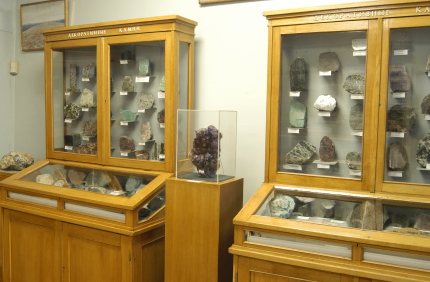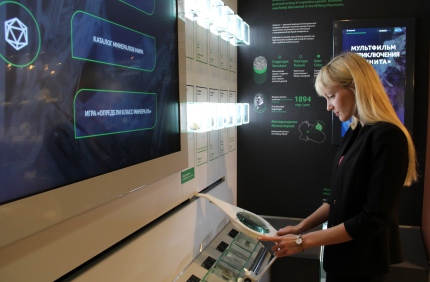The First Khibinogorsk Museum’s Foundation
Due to the discovery of unique Khibiny apatite-nepheline ores and the foundation of “Apatit” enterprise in 1929, a lot of Soviet and foreign specialists came to the Kola Peninsula. They intended to learn everything on apatite, apatite satellites and embedded rocks and to see the “fertility stone” itself. Therefore, on B.A.Lindener initiative, the head of the control and testing unit of the Apatite mine (former academic secretary of the USSR Academy of Sciences), with the support of “Apatit” enterprise managing director V.I. Kondrikov and academician A.E.Fersman, the decision to establish a geological museum in Khibinogorsk was made. Wide mineral and rock collection gathered by geologists of the Apatite mine from the first days of Kukisvumchorr deposit exploitation became the basis for geological collection of the Museum. The Museum was founded on 20 March 1932. Therefore, it became the first museum of the city under construction.
In 1935, during the period of “Apatit” management, the House of technics, one of the departments of Mining and Geological Museum, was organized. The museum collection had been systematically enriched with new mineralogical findings from the Apatite Deposit in the Khibiny massif. It increased significantly with the establishment of a special group of collectors under the direction of P.K.Semenov (later he became the head of the Kirovsky mine). The species on mineralogy and petrography from other areas of the Kola Peninsula: Monche-tundra, Afrikanda, Lovozero tundra, the Olenegorsk district enriched the museum collection. Famous geologists N.I.Eliseeva, B.N.Kupletsky, O.A.Vorobieva, A.N.Labuntsov, N.Gutkovoy and E. M.Bonshtedt and many others contributed a lot to the development of the Museum.
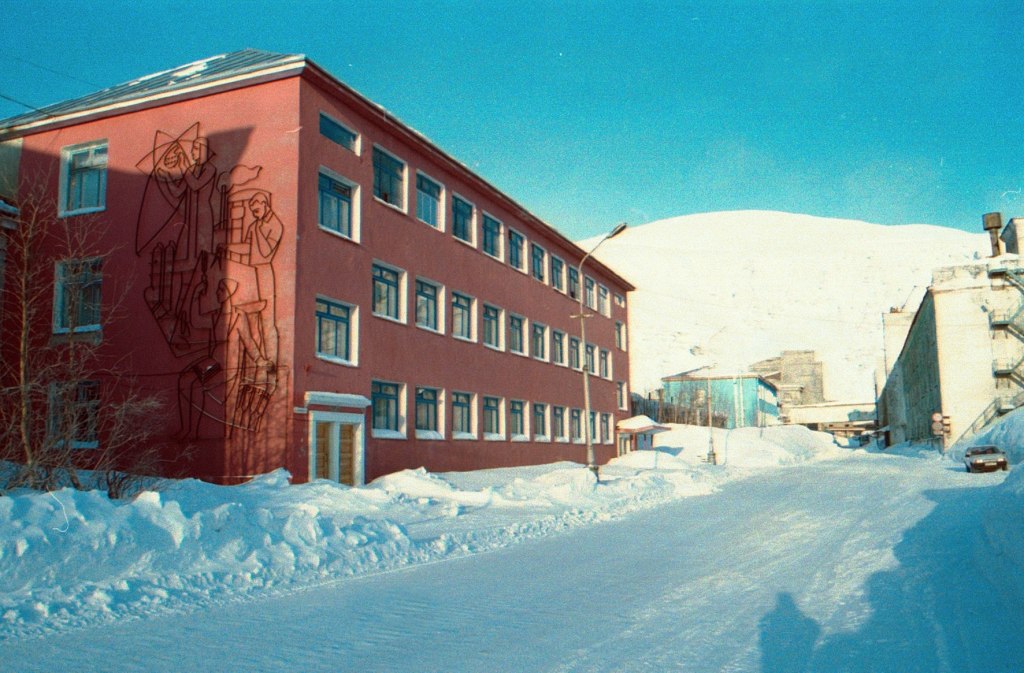
The Museum played an important educational role in urban life. Workers, specialists, students and regular residents visited it.
Due to the competent management of the first director of the Museum B.A.Lindener, his employee and student V.P.Skripkina, designers and artists, specialists, the Museum had been developing and still remained one of the centers of the urban culture.

In 1941, during the great Patriotic war, the exhibits of Mining and Geological Museum had been moved to the Urals together with the equipment of “Apatit” enterprise. After the war, the renovation of the Museum was completed in 1949.
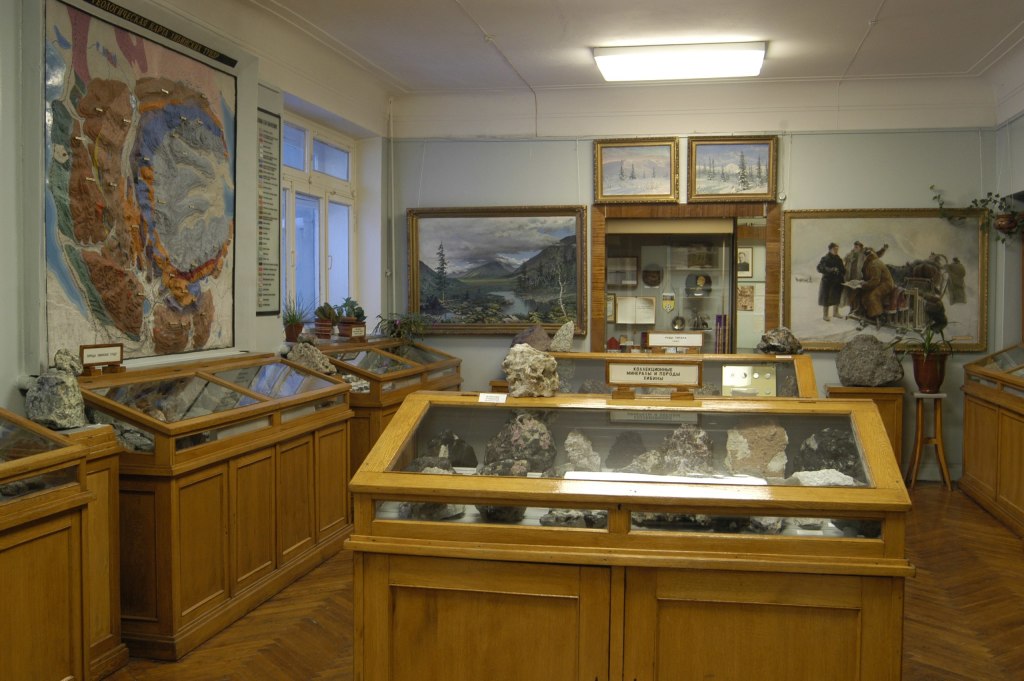
THE DEVELOPMENT OF THE MUSEUM
In the following years, new mechanisms and technologies, as well as new production facilities were shown at the Museum in miniatures, diagrams and models. In 1954, Mining and Enrichment departments were fully renovated.
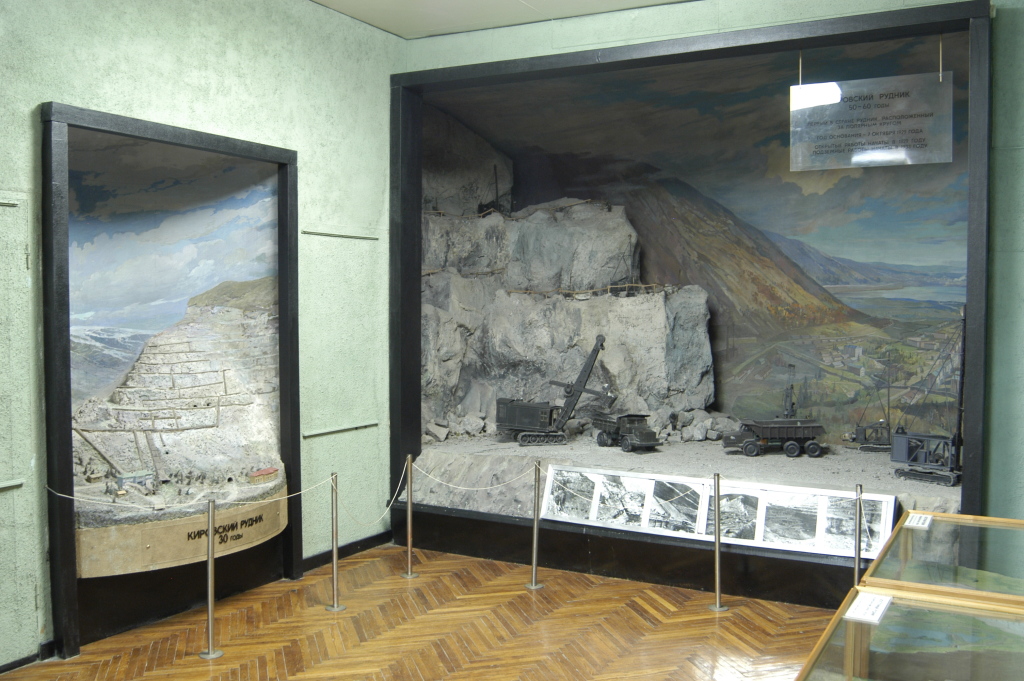
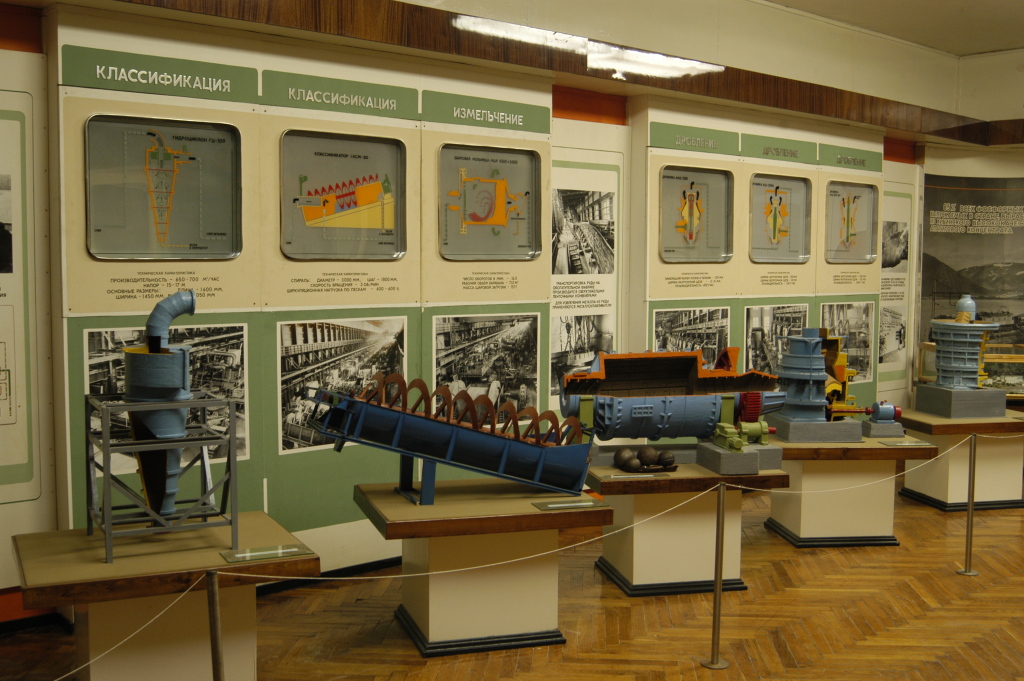
Powerful progressive capacity of the plant “Apatit” had been realized in 60-70s years. The Museum displays the miniatures of the largest departments of the enterprise: ANEP-II and the Central mine.
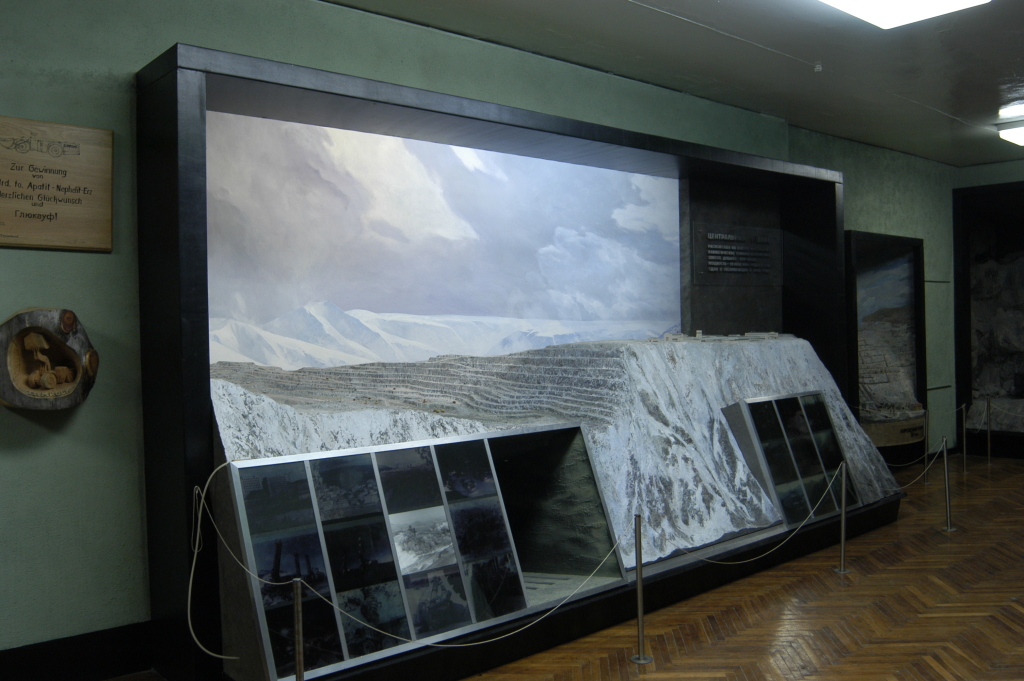
In 1982, the hall of the enterprise history containing documents, photos, books and periodicals from the first days of its existence was opened.
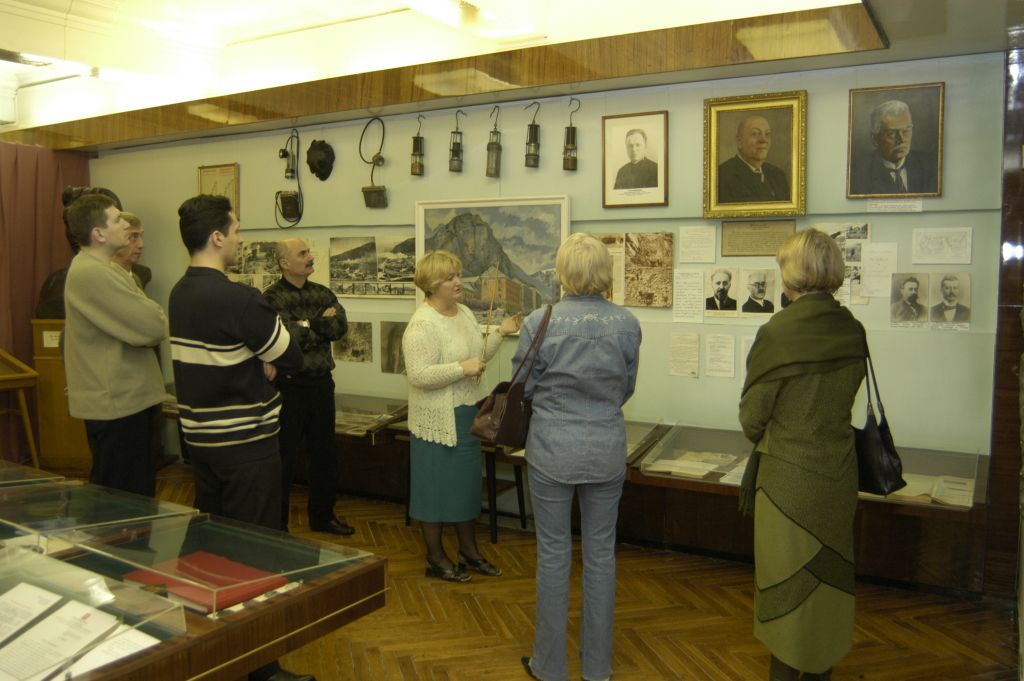
During the extraction of natural stone Khibinite in the Lovchorr area, the exhibition showing the beauty of this rare stone was set up. The items from Khibinite and the stands on the technology production are represented at the Museum.
For 80th anniversary of JSC “Apatit” the exhibition hall, where the visitors were invited to have a look at the gifts presented to the company in different years, was opened.
The mineralogical collection of the Museum was replenished from different sources: the acquisition from VSEGEI funds, the exchange with other mining and geological enterprises, the gifts from the students of Kirovsk mining technical school, the geologists from other parts of the country – the museum’s visitors and the enterprise employees, the gifts from private collections. One of the most active donors was a shooter from the Kirovsky mine, a collector and a big fan of minerals A.S.Podlesnyi.
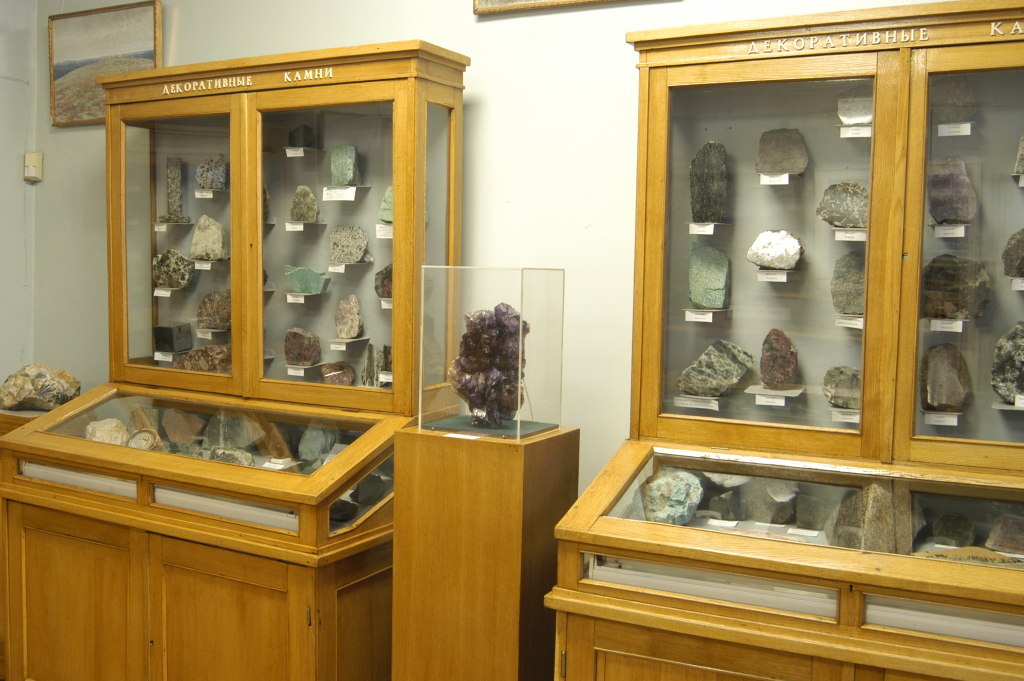
The mineralogy of the Khibiny is a unique phenomenon of geological history. A wide collection of new minerals was discovered here. The leading researcher of the Institute of mineralogy, geochemistry and crystal chemistry of rare elements of the Ministry of natural resources and sciences, the member-correspondent of the Russian Academy of natural sciences, the honored geologist of the Russian Federation, the doctor of geological-mineralogical sciences A.P. Khomyakov contributed to the collection a lot. He is the discoverer of 100 new minerals, 87 of which had been revealed in the Kola Peninsula alkaline massifs. These discoveries received a wide recognition both in our country and abroad and were awarded with the most prestigious “academic” prize named after A.E.Fersman.
NEW NAME AND NEW STAGE IN THE DEVELOPMENT
On 20 March 2013 Geological Museum was opened in a new building. The name – Museum and Exhibition Center of JSC “Apatit” was given in March 2014. The Museum is located in the oldest stone building of the town – the former firehouse. Now Museum and Exhibition Centre is easy to find by clock tower in the city center.
Currently, the museum exposition is located in 8 halls and has 5 departments (historical, geological, mining, ore dressing, exhibition halls). The systematic collection of minerals has 850 mineral species.

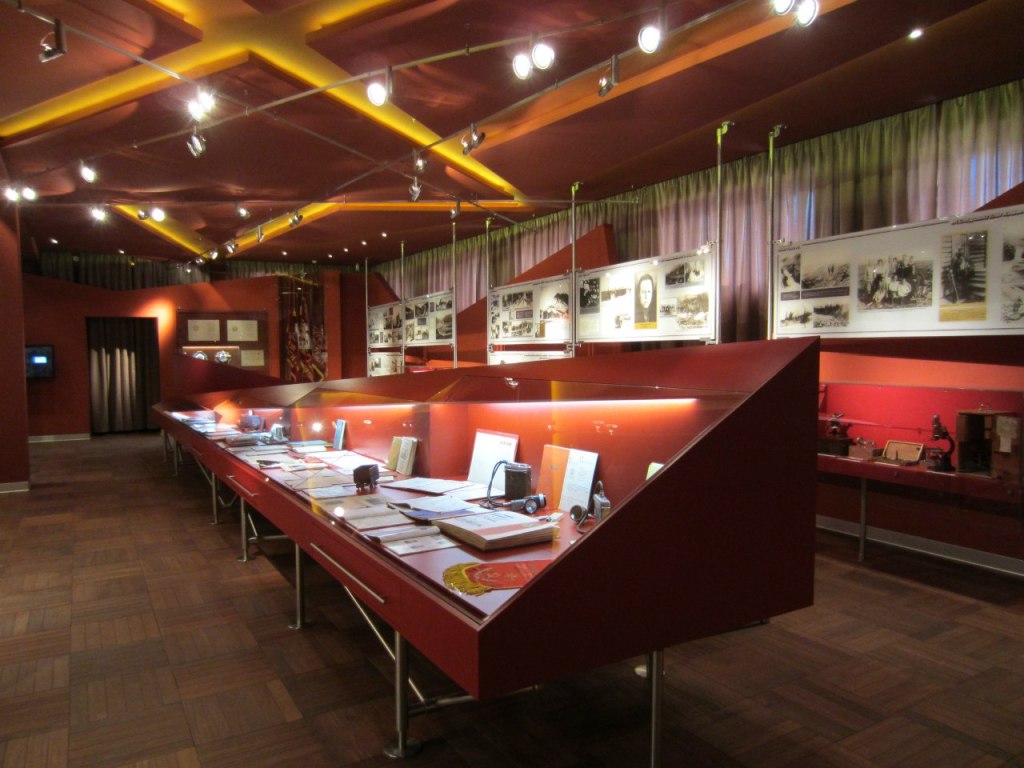
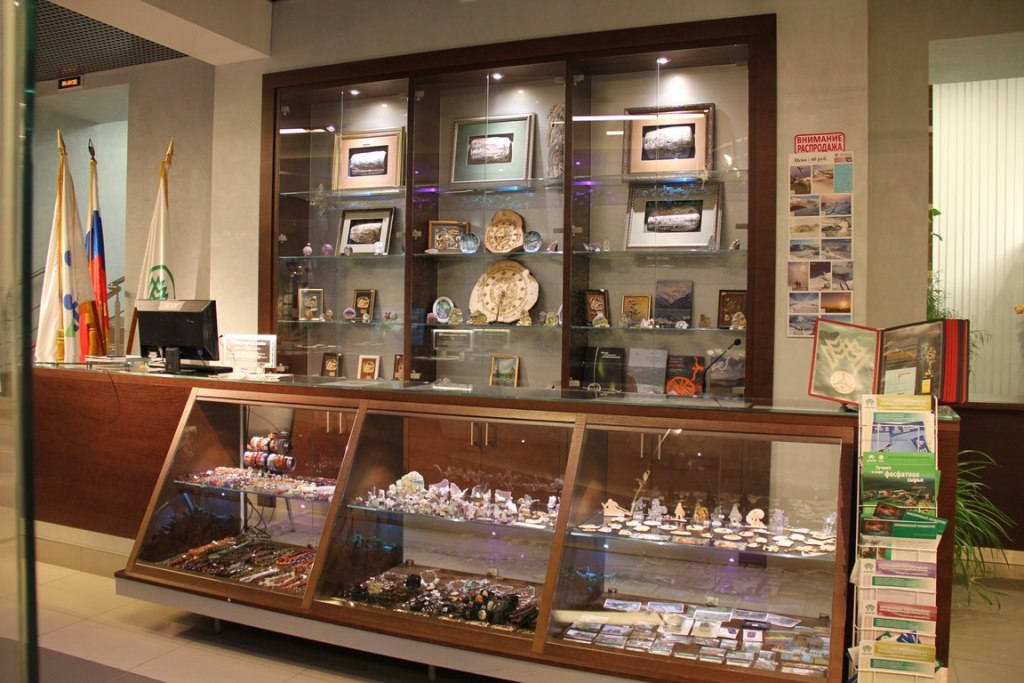
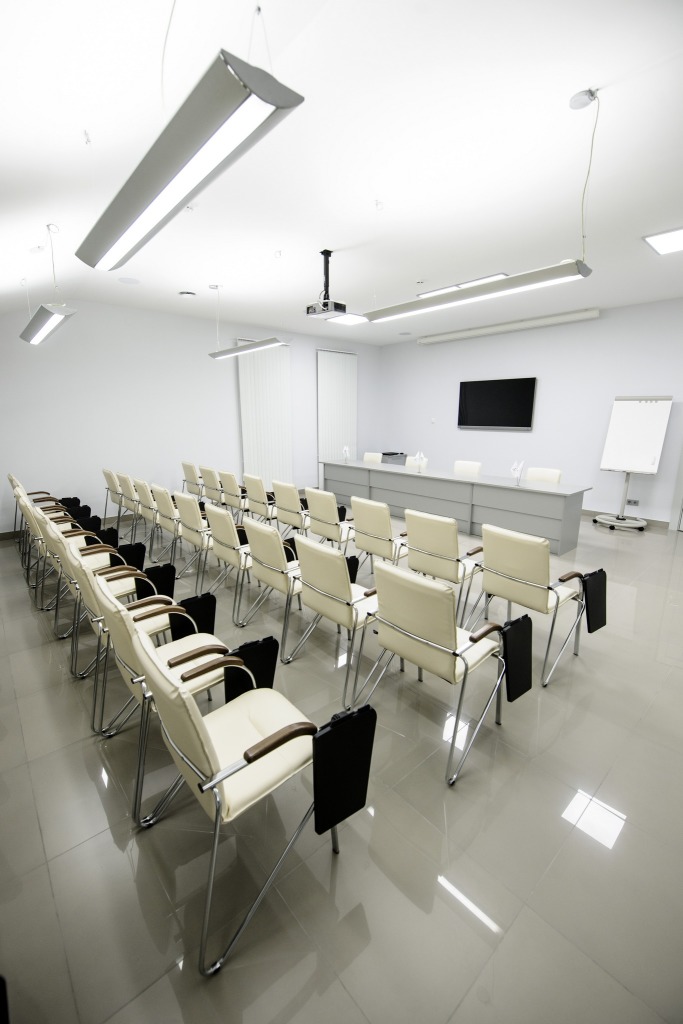
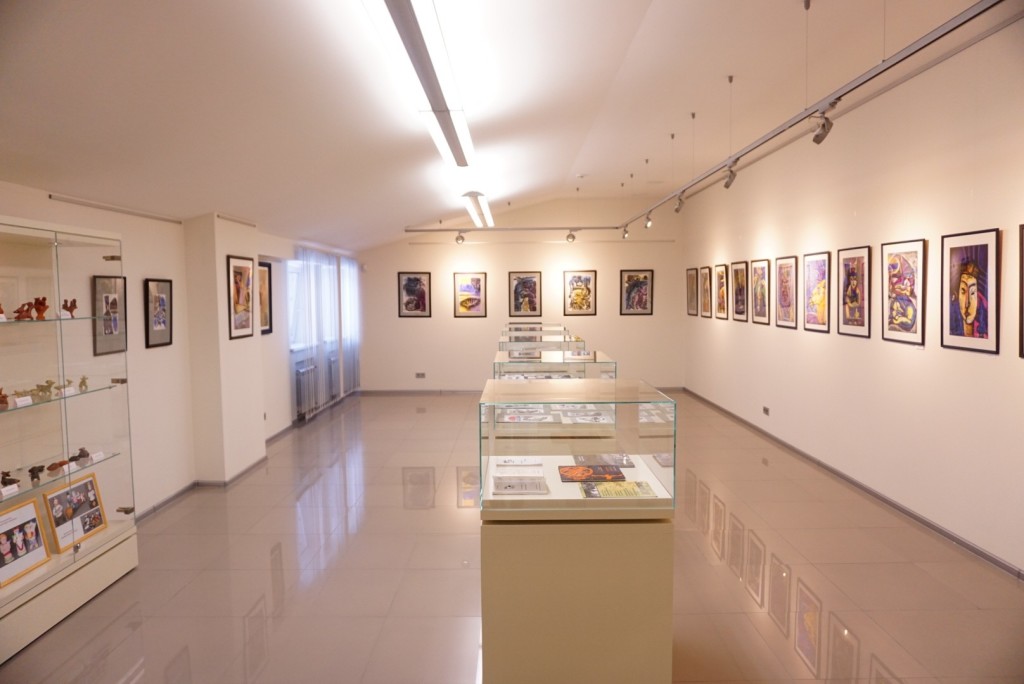

Museum and Exhibition Center of JSC Apatit is regularly renewed and equipped with modern multimedia. Since 2015, visitors have a possibility to rent audio guides.
In 2016, new interactive multimedia exhibition “The Journey from the Bowels of the Earth to the Atmosphere” was represented in the tower.
Museum and Exhibition Center is a cultural center of our town. Students, tourists and people interested in the history of the town visit our Museum.




